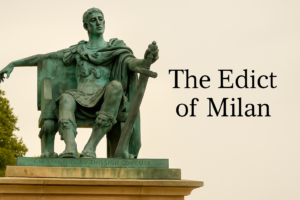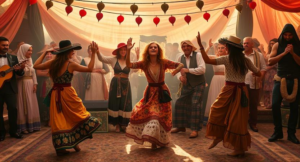Shinto: Nature, Ancestors, and Spiritual Worship
Shinto is the indigenous and ancient religion of Japan. It emphasizes worship of nature and ancestors, encompassing thousands of Kami (spiritual beings) and sacred sites. Rituals and festivals are central elements of Shintoism. The cultural heritage rooted in Shintoism holds a significant place in Japan’s identity.

History
The origins of Shinto extend back to pre-written history. Beliefs and rituals developed in various regions of Japan and gradually merged to form the foundation of Shinto. This belief system played a central role in the daily life of people before the introduction of Buddhism to Japan. With the spread of Buddhism, Shinto and Buddhism coexisted in Japanese society.
Core Beliefs and Teachings
Shinto does not have a written sacred text. Instead, its core beliefs and teachings are formed through mythology, legends, and folk tales. At the heart of Shinto are spiritual beings known as Kami. Kami are considered spirits residing within and governing nature. Mountains, rivers, trees, and other natural entities are seen as abodes of Kami.
Ancestor worship is a significant component of Shinto. Families perform various rituals to honor the spirits of their ancestors. These rituals typically take place in family shrines or as household worship practices.
Rituals and Practices
In Shinto, rituals are performed at various stages of life and in accordance with natural events. One of the most common rituals is shrine visits. At shrines, people pray, make wishes, and express gratitude to Kami. The torii gate marks the entrance to a shrine, symbolizing the beginning of a sacred space.
Purification rituals are of great importance in Shinto. Water-based rituals provide physical and spiritual cleansing. Known as Misogi, these rituals are often performed at sacred water sources near shrines.
Cultural Influences and Shinto Festivals
Shinto has left a profound mark on Japanese culture. Traditional Japanese arts, architecture, literature, and festivals reflect Shinto influences. Shinto festivals are significant both as religious and social events. Known as Matsuri, these festivals are held at specific times of the year to express gratitude to Kami.
Gion Matsuri and Kanda Matsuri are among Japan’s most famous Shinto festivals. During these festivals, people dressed in traditional attire organize parades, perform dances, and sing songs
in the streets. Lanterns, decorations, and rituals create the colorful and lively atmosphere of the festival.
Shinto in Modern Japan
Today, Shinto continues to thrive in modern Japan. Despite the fast pace of modern life, many Japanese people maintain Shinto rituals and shrine visits during important life events and holidays. The deep respect for nature and ancestors in Shinto remains a cornerstone of Japanese culture and society.
In conclusion, Shinto is a belief system deeply embedded in Japan’s history, culture, and social structure. With its respect for nature and ancestors, rituals, and festivals, Shinto continues to play a vital role in the daily lives of the Japanese people.
Summary
Shinto is the indigenous and ancient religion of Japan. It emphasizes worship of nature and ancestors, encompassing thousands of Kami (spiritual beings) and sacred sites. Rituals and festivals are central elements of Shintoism.










